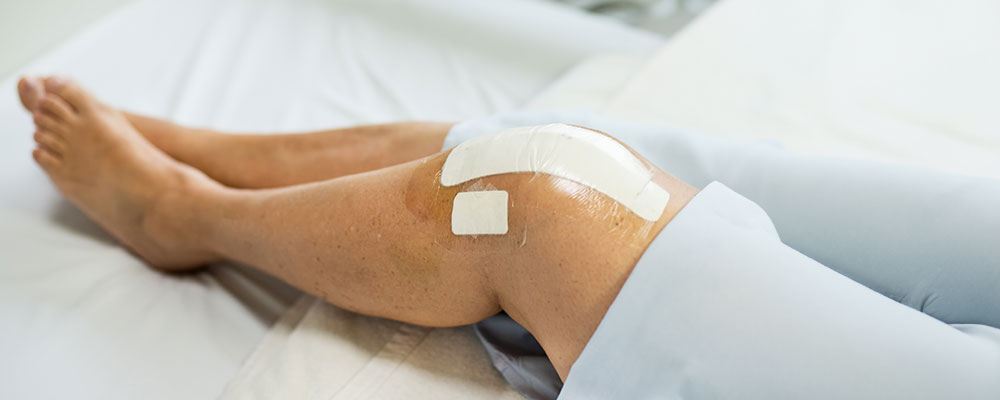Back in Action: Knee Replacement Exercise Plan
Posted On: March 6, 2024 by Lindsay Matijevich

Get ready to get on the path of knee replacement surgery, which marks a transformative expedition toward regaining an active and pain-free lifestyle. At Mossy Creek Rehab, we recognize the pivotal role of exercise-based therapy in this journey. This guide delves into the importance of post-knee replacement gym exercises, early therapeutic routines post-surgery, techniques to enhance workouts, fundamental strength training principles, effective management of post-exercise discomfort, and exercises to steer clear of during the recovery process.
Why Having a Well-Structured Gym Routine is Crucial After Knee Replacement?
Embarking on a carefully planned gym routine after knee replacement surgery is not just about regaining physical strength but is crucial for a holistic recovery. The benefits extend beyond the physical realm, promoting mental and emotional well-being. A structured routine helps in preventing complications, reduces the risk of joint stiffness, enhances flexibility, and makes the overall healing process faster.
Early Exercises Following Surgery
The initial phase of recovery demands gentle and controlled exercises to promote blood circulation, reduce swelling, and prevent muscle atrophy. Early exercises focus on regaining range of motion, incorporating activities such as ankle pumps, seated leg raises, and gentle knee bends. These low-impact movements lay the foundation for more intensive workouts in the subsequent stages of recovery.
1. Ankle pumps:
- Sit or lie down with your leg extended.
- Move your ankle up and down in a pumping motion.
- This exercise helps improve blood circulation and prevents blood clots.
2. Seated leg raises:
- Sit on a firm surface with your back straight.
- Lift your operating leg straight out in front of you.
- Hold for a few seconds, then lower it back down.
- This exercise aids in strengthening the quadriceps muscles and improves range of motion.
3. Gentle knee bends:
- Sit on the edge of a sturdy chair with your feet flat on the ground.
- Slowly bend your knee, bringing your foot towards your buttocks.
- Hold for a moment, then straighten your leg.
- This exercise helps in regaining flexibility and promoting joint movement.
4. Heel slides:
- Lie on your back with your legs extended.
- Slide your heel towards your buttocks, bending your knee.
- Slowly return your leg to the starting position.
- Heel slides enhance flexibility and contribute to improving knee mobility.
When and How to Make Workouts More Intense?
Timing is crucial in transitioning from gentle to intense exercises at Mossy Creek Rehab’s exercise-based therapy. The initial weeks focus on range of motion and flexibility. Around the fourth to sixth week post-surgery, as approved by your orthopedic surgeon, you may include exercises like stationary cycling and leg presses. Adjust intensity by modifying resistance, repetitions, and duration. Types of therapeutic exercises include aerobics, endurance, coordination, neuromuscular reeducation, and range of motion, ensuring a comprehensive approach to your recovery. Progress at a pace aligned with your body, avoiding undue stress on the newly replaced knee.
Strength Training After Knee Replacement
Strength training is a cornerstone of an effective knee replacement gym routine. It helps build muscle around the knee joint, providing stability and support. Resistance exercises, such as leg extensions, leg curls, and wall squats, become your main allies in building the muscles without placing excessive strain on the replaced knee. A gradual increase in weight and resistance ensures a steady progression, aiding in the restoration of functional strength.
Following Exercise, Pain or Swelling
While exercise is essential for recovery, it’s crucial to listen to your body and be mindful of any post-workout discomfort. A mild level of discomfort is normal, but persistent knee pain or significant swelling should not be ignored. Ice packs, elevation, and rest are effective measures to alleviate these symptoms. If discomfort persists, consulting w4ith your orthopedic surgeon is advisable to rule out any potential complications.
Exercises to Avoid During the Recovery
Certain exercises pose a risk to the newly replaced knee and should be avoided during the recovery period. High-impact activities such as running, jumping, and aggressive twisting movements can exert excessive stress on the joint, potentially compromising the success of the surgery. Additionally, exercises that involve deep knee flexion, such as deep squats, should be approached with caution. Collaborating closely with your orthopedic team ensures a customized approach that aligns with your specific recovery needs.
Conclusion
After knee replacement surgery, a gym routine is not just a series of exercises but a personalized journey towards a healthier, more active future. As a distinguished provider of exercise-based therapy, Mossy Creek Rehab underscores the significance of customization in shaping a post-surgery workout plan. The focus extends beyond mere physical strength, aiming to foster mental resilience for a comprehensive and lasting transformation. At Mossy Creek Rehab, our dedicated team guides individuals through this nuanced process, offering expertise, support, and a clear roadmap for a safe and effective recovery. Specialists collaborate closely with patients, tailoring each exercise to their unique needs and recovery timeline. In essence, the post-knee replacement exercise routine at Mossy Creek Rehab is more than a series of activities; it’s a commitment to an active and fulfilling lifestyle.

